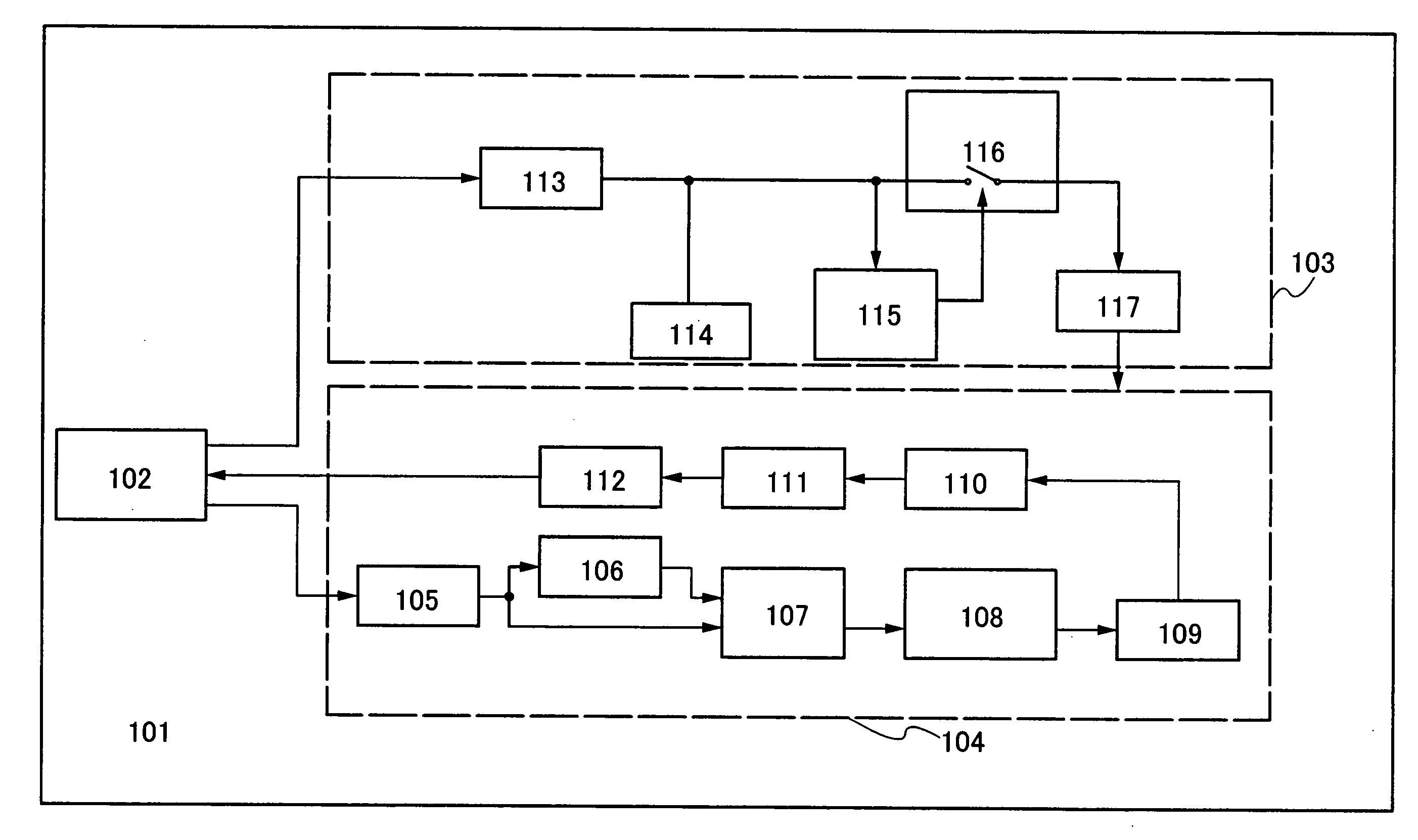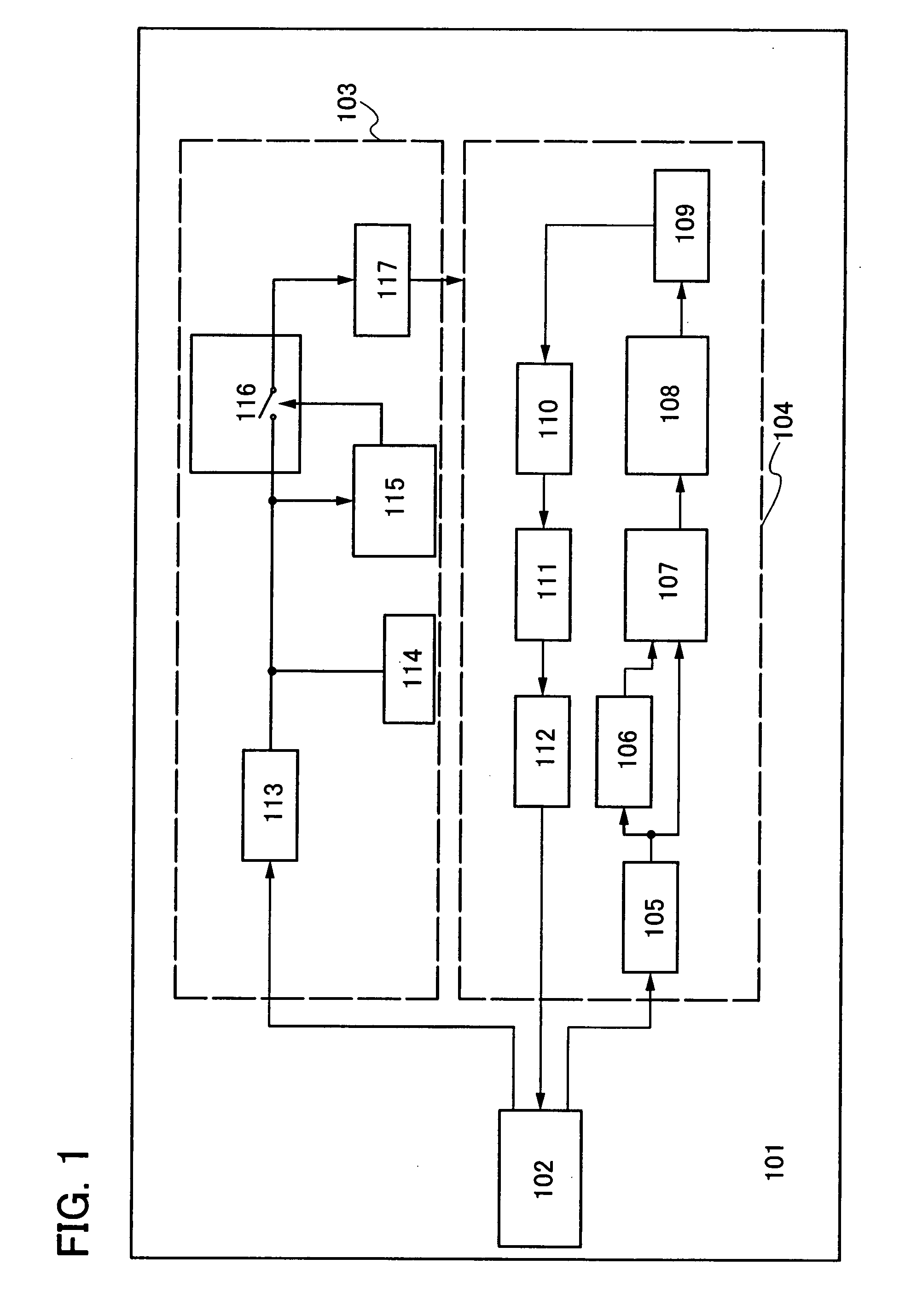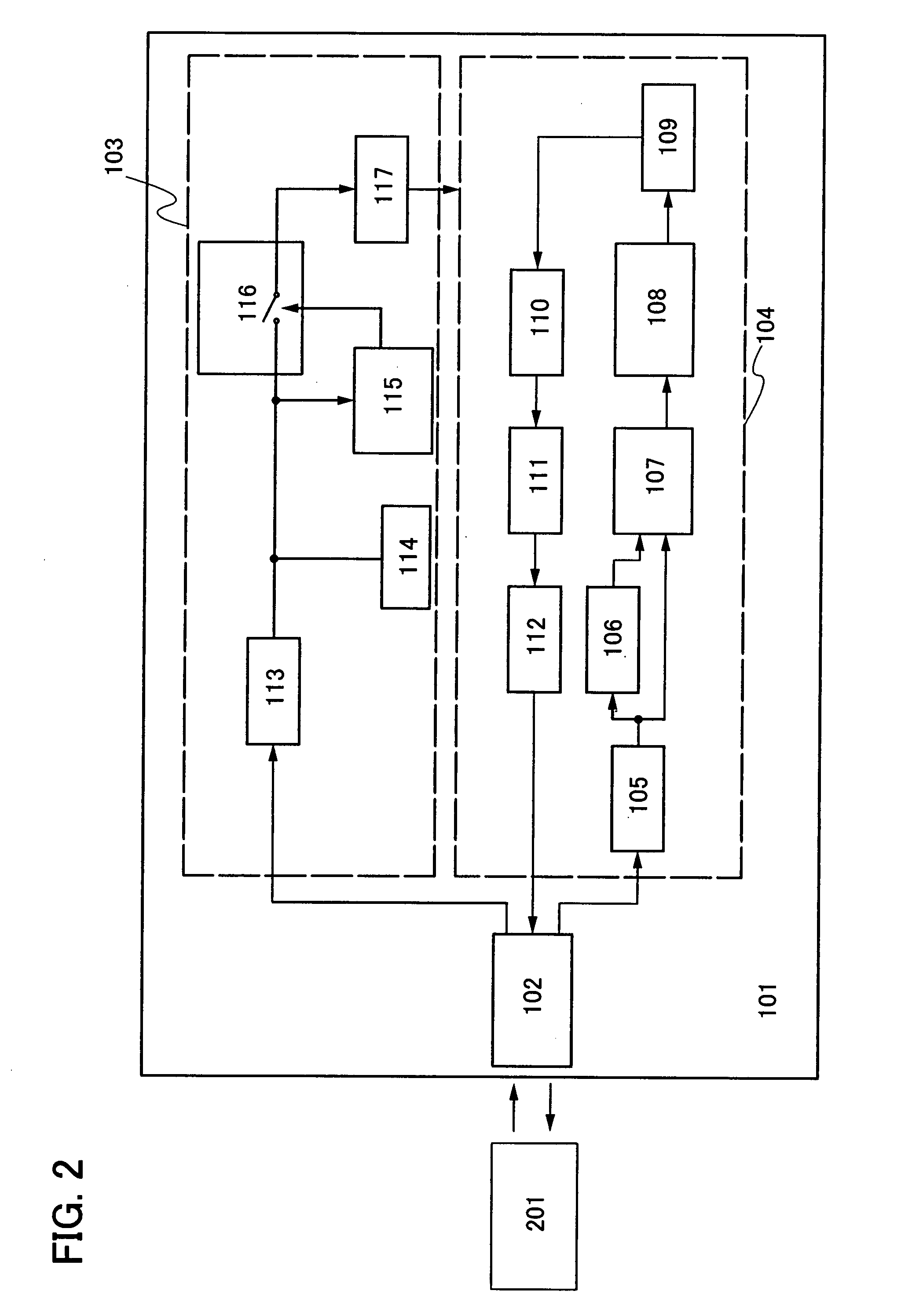Semiconductor device and IC label, IC tag, and IC card having the same
a technology of semiconductor devices and ic tags, which is applied in the direction of electrical signalling details, mechanical actuation of burglar alarms, instruments, etc., can solve the problems of inability to generate the power necessary for transmitting and receiving individual information, and difficulty in transmitting and receiving signals. , to achieve the effect of preventing deterioration over time of batteries, shortening the communication distance with readers/writers, and reducing the power consumption of batteries
- Summary
- Abstract
- Description
- Claims
- Application Information
AI Technical Summary
Benefits of technology
Problems solved by technology
Method used
Image
Examples
embodiment mode 1
[0065]A structural example of a semiconductor device of the present invention will be explained with reference to block diagrams shown in FIGS. 1 and 2. Note that, in this embodiment mode, explanation is made of a case where a semiconductor device is used as an RFID tag (hereinafter, also simply referred to as an “RFID”).
[0066]A semiconductor device shown in FIG. 1 (hereinafter, described as an “RFID 101”) includes an antenna circuit 102, a power supply circuit 103, and a signal control circuit 104. The signal control circuit 104 includes an amplifier circuit 105, a demodulation circuit 106, a logic circuit 107, a memory control circuit 108, a memory circuit 109, a logic circuit 110, an amplifier circuit 111, and a modulation circuit 112. In addition, the power supply circuit 103 includes a rectifier circuit 113, a battery 114, a low-frequency signal generation circuit 115, a switching circuit 116, and a power source circuit 117.
[0067]FIG. 2 shows a block diagram where the antenna c...
embodiment mode 2
[0100]This embodiment mode will explain a semiconductor device, which is the RFID having the structure described in Embodiment Mode 1 of the above, and additionally having a control circuit for controlling selection between power supplied from the rectifier circuit and that supplied from the battery, as power supplied to the power source circuit of the power supply circuit, with reference to drawings. Note that, as for the drawings used in this embodiment mode, the same portions as those in Embodiment Mode 1 are denoted by the same reference numerals in some cases.
[0101]One structural example of the semiconductor device of the present invention in this embodiment mode will be explained with reference to block diagrams shown in FIGS. 10 and 11. Note that this embodiment mode will explain the case where a semiconductor device is used as an RFID.
[0102]An RFID 101 of FIG. 10 includes an antenna circuit 102, a power supply circuit 103, and a signal control circuit 104. The signal control...
embodiment mode 3
[0130]This embodiment mode will explain a structure having a booster antenna circuit (hereinafter, referred to as a booster antenna) in the semiconductor device having the RFID shown in Embodiment Mode 1, with reference to drawings. Note that, in the drawings which are used in this embodiment mode, the same reference numerals denote the same portions as in Embodiment Mode 1.
[0131]Note that a booster antenna described in this embodiment mode refers to an antenna circuit (hereinafter, referred to as a booster antenna) which is larger than an antenna circuit which receives a signal from a reader / writer or a wireless signal from a charger or the like. An antenna circuit and the booster antenna resonate at a frequency band to be used and are magnetic-field coupled so that a signal generated by the reader / writer or the charger can be efficiently transmitted to a targeted RFID. Since the booster antenna is connected to a coil antenna through a magnetic field, the booster antenna is not nec...
PUM
 Login to View More
Login to View More Abstract
Description
Claims
Application Information
 Login to View More
Login to View More - R&D
- Intellectual Property
- Life Sciences
- Materials
- Tech Scout
- Unparalleled Data Quality
- Higher Quality Content
- 60% Fewer Hallucinations
Browse by: Latest US Patents, China's latest patents, Technical Efficacy Thesaurus, Application Domain, Technology Topic, Popular Technical Reports.
© 2025 PatSnap. All rights reserved.Legal|Privacy policy|Modern Slavery Act Transparency Statement|Sitemap|About US| Contact US: help@patsnap.com



